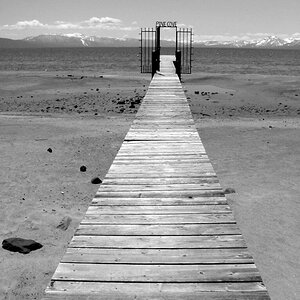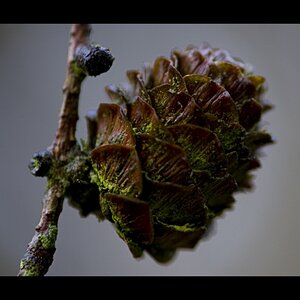Socrates
TPF Noob!
- Joined
- Jan 28, 2008
- Messages
- 1,183
- Reaction score
- 0
- Location
- Exit #5
- Can others edit my Photos
- Photos NOT OK to edit
I've long believed that a lens hood is especially important when a filter is being used. I remember being told something about the flat surface of a filter (compared with the curvature of a lens surface) making a hood more critical.
First, is my belief correct?
Second, is my belief correct if the filter is a polarizer?
My reason for asking is that I have a Nikon dSLR and I recently purchased Nikon's 18-200 VR lens along with Hoya's Pro-1 circular polarizer (at 72mm, it ain't exactly cheap). In any event, the hood does not mount on the filter threads and it's quite difficult rotating the polarizer when the hood is attached. Right now, it appears that I may have to adjust the polarizer with the hood removed and then attach the hood prior to taking the photo, which is not exactly convenient.
Bottom line question: What is your judgment regarding the importance of the hood when using a polarizer?
First, is my belief correct?
Second, is my belief correct if the filter is a polarizer?
My reason for asking is that I have a Nikon dSLR and I recently purchased Nikon's 18-200 VR lens along with Hoya's Pro-1 circular polarizer (at 72mm, it ain't exactly cheap). In any event, the hood does not mount on the filter threads and it's quite difficult rotating the polarizer when the hood is attached. Right now, it appears that I may have to adjust the polarizer with the hood removed and then attach the hood prior to taking the photo, which is not exactly convenient.
Bottom line question: What is your judgment regarding the importance of the hood when using a polarizer?




![[No title]](/data/xfmg/thumbnail/34/34115-73b827c6a6db1413dcead11e4caaae69.jpg?1619736285)

![[No title]](/data/xfmg/thumbnail/34/34116-b81991a4a8a532509a981cadbacd573c.jpg?1619736286)
![[No title]](/data/xfmg/thumbnail/42/42349-fa3065c4e047f0114ec8715d9168dff9.jpg?1619740147)



